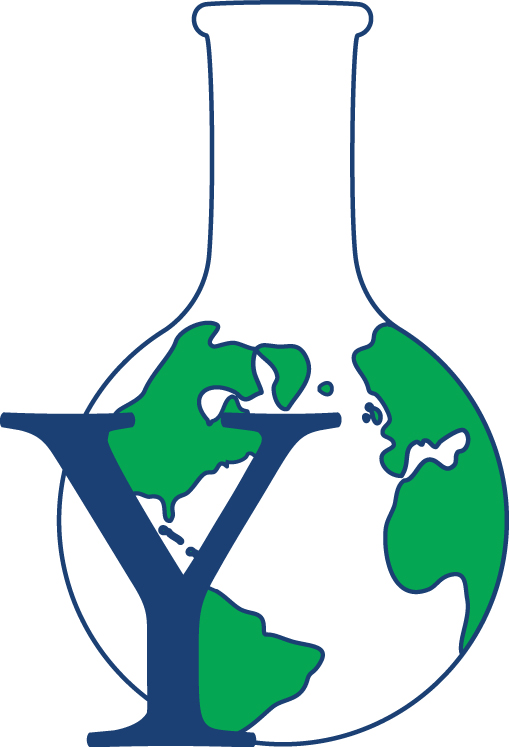
Systems
Overview
Lignocellulose, the main constituent of plant cell walls, has become the most important renewable carbon source of bio-energy and chemicals because it is available in such large quantities. Lignin, a significant fraction of lignocellulose, remains burnt or discarded after industrial processing of the plant material, with only 2% of its generated weight finding commercial applications. The efficient valorization of lignin is hindered by the lack of selectivity of most de-polymerization approaches.
Study
The primary aim of this project is to develop an efficient, selective and sustainable process for de-polymerizing lignin into valuable aromatic compounds. To achieve this goal, we are investigating copper-doped porous metal oxides as cheap yet efficient catalysts for the selective breaking of specific lignin linkages.
Impact
Our methodology has the potential to provide an abundant and renewable source of platform chemicals from what is currently a low-value bio-waste from the production of liquid fuel and from the paper industry. The implementation of such a technology could thus render biofuel production more economically viable by reducing waste streams and increasing value-added products.
Publications
Katalin Barta, Genoa R. Warner, Evan S. Beach and Paul T. Anastas; “Depolymerization of organosolv lignin to aromatic compounds over Cu-doped porous metal oxides”; Green Chem.; 2014, 16, 191.
Overview
Electronic waste (E-Waste), also known as Waste Electrical and Electronic Equipment (WEEE), is the term used to describe end-of-life appliances that use electricity. Many of these advanced electronics products contain specialty metals and rare earth elements. As new products increasingly rely on these valuable materials, concern has risen surrounding the environmental, economic, and sociopolitical stability of the long-term supply of these metals. These factors compound to make metal recovery in E-Waste a critical need in the industry and for the environment.
Study
We have an ongoing research project that focuses on building a novel technology to reclaim and separate these specialty and rare earth metals from E-Waste. Our focus is on using nano-enabled materials to increase recycling efficiencies for these valuable materials. In doing so, we have developed a filter apparatus using polymer amended-carbon nanotube (CNT) filters that can selectively separate two metals from a mixed metal waste stream.
Impact
This technology could offer several advantages including enhanced recovery of high-value specialty minerals using low-cost filters, reduced need for mining Earth-rare minerals in politically unstable or environmentally undesirable locations, enhanced atom economy during device fabrication, and reduced emissions of toxic elements or nascent industrial minerals that have yet unknown toxicities or environmental impacts.
Publications
M. P. O’Connor and D. L. Plata. The race for the gold metal: A novel approach for reclaiming specialty metals from industrial waste and processing streams. National American Chemical Society 249th Spring Meeting. Denver, CO. March 2015. Poster.
M. P. O’Connor and D. L. Plata. Nano-enabled material efficiency: Reclaiming specialty metals from industrial waste and processing streams. Sustainable Nanotechnology Organization Conference. Boston, MA. November 2014. Poster.
M. P. O’Connor and D. L. Plata. The race for the gold metal: A novel approach for reclaiming specialty metals from industrial waste and processing streams. Gordon Research Seminar: Environmental Sciences: Water. Holderness, NH. June 2014. Invited Talk.
This project uses technology modeling and life cycle assessment to characterize the systems-level environmental implications of producing algal fuels and bioproducts.
Algae are a potentially bountiful feedstock for bio-products and biofuels, but as a nascent technology, the environmental impacts of large scale cultivation and processing need to be assessed. This project has two parts - one is to examine different technological options for algae cultivation and processing and to test different combinations for their environmental performance. The second is to gather existing life cycle assessment studies of algae that report a wide range of energy and green house gas results, and to undertake a meta-analysis in order harmonize the studies and look for central tendencies. This enables a meaningful discussion of actual technological difference among systems, which were previously obscured by the wide range of modeling assumptions and system boundaries considered.
This work seeks to quantify the environmental impacts of manufacturing the biopolymer chitosan from chitin.
Data is being collected from various chitosan manufacturing plants, covering several different methods of chitosan production. This project will analyze the environmental impacts at different steps of the processes and provide a basis for comparing chitosan to other chemicals used in the application areas.
A critical review of the science of sustainable stormwater management, including definition of best management practices and low impact developments for stormwater, green infrastructure, as well as sustainable stormwater management; modeling to inform stormwater practice; optimized watershed scale design; and implementation.
Literature from both academic and public sources is considered in order to provide a holistic perspective. There are many tools available for stormwater management, but there is little evidence of systematic design processess and outcomes due to the lack of 1) large-scale environmental performace data; 2) cost-effectiveness studies that include life cycle costs; and 30 pricin and policy structures that engage broader stakeholders. We presented a decision process based on systems thinking and show where current literature meets decision-making needs, where research gaps exist, and how research needs should be prioritized to support sustainable stormwater infrastructure implementation. We are aslo starting data collection and model development of hydrology in the city of New Haven to test best management practices in model setting.
